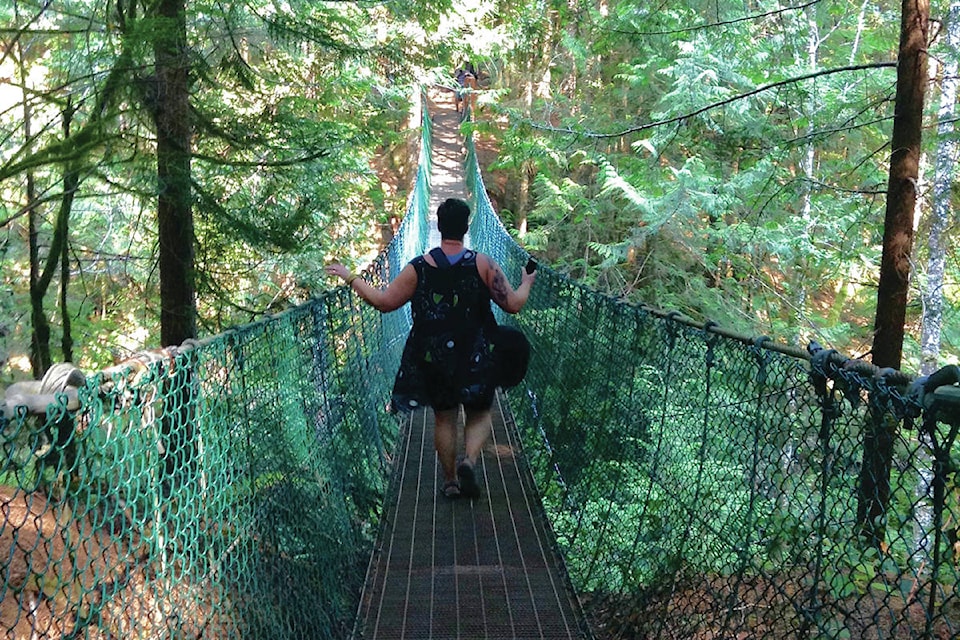Written by Chris Brauer
When I grew up in Victoria, downtown was packed with used bookstores, antique stores and hacky-sack college kids in Market Square. About five years after I left, the downtown core lost much of its charm. Almost all the used bookstores and antique stores disappeared and Market Square was dead space. The locals preferred to frequent shopping malls in the suburbs where parking wasn’t an issue. Many downtown businesses moved or closed their doors, and the once vibrant streets seemed empty and uninviting.
Lately, however, downtown Victoria is full of artisanal bakeries, record shops, coffee shops and farm-to-table restaurants. Once again, it is a happening and inviting place. While traffic and construction make it busier and louder than ever before, I can once again see the appeal of spending time wandering around and popping into eclectic independent shops.
But three days is enough. Three days is enough to get some shopping done, eat in some good restaurants, try some craft ales, and people-watch while sipping coffee in small hipster cafés. By then my family and I are ready to get far from the madding crowds and disappear into the woods. Sometimes we take a little ferry over to Salt Spring Island and walk among the Arbutus trees at Ruckle Park, or make our way up Mount Douglas to marvel at the view, but maybe our favourite walk is just past Jordan River (70 km west of Victoria). It takes over an hour to wind through Colwood, Metchosin and Sooke, but the drive is worth it.
After picking up lunch supplies and finding a quick coffee en route, we parked at the trail head, tied up our hiking boots, strapped on our packs, and headed into the coastal rainforest. The Juan de Fuca Trail, established as a provincial park in 1995, hugs the west coast of Vancouver Island and was once the telegraph line that connected Victoria to Bamfield as far back as 1889. Though I have never hiked the entire 47-kilometer trail, I have completed the first nine kilometers to Bear Beach on overnight excursions when I was younger. The first two kilometers features various terrain and a suspension bridge before suddenly and unceremoniously plunking the hiker at Mystic Beach where most day-trippers stop to walk the shoreline, play on the long rope swing, or walk into the water before heading back to the comfort of their car.
The west coast temperate rainforest is a wondrous wall of vibrant greens and the thick wet undergrowth makes walking off the trail a madman’s folly. As we entered the trail, and it got darker and darker, I felt as if I were entering through the jaws of a living creature. The smell of earth filled our noses and, save for our breathing, there was nothing but a symphony of quiet. Though the gnarly root systems and rougher terrain broke our natural cadence, it forced us to be constantly aware of the surrounding beauty. We continued on under the domes and vaults of the trees – the living documents of times past – and occasionally little wooden bridges guided us over the muddy areas where small streams have softened the earth. The sun is at its most beautiful when it is doing battle and, as it filtered through the mighty tall trees in intermittent light, it produced an otherworldly verdant glow.
Just under halfway is the suspension bridge, and many hikers that are not fond of heights go one at a time so the bridge doesn’t sway as much. As I crossed I looked down at my feet and watched the river below, and then stopped to take in the view of trees clinging to the sides of cliffs and the churning waters making their way to the Pacific.
We continued on, dwarfed by Sitka spruce, Western hemlock, Douglas fir and Western red cedar. A thousand human feet before us had made the thick roots of these mighty trees shine in the faint light. Too often we forget about the power and resilience of the natural world and, as the trail finally widened and brought us closer to the water, I reflected on the passing of time.
The final stretch to Mystic Beach is made up of stairs, either cut into the trail and reinforced with short beams or cut into massive trees that are sunk into the soft earth. As we made our way down, and more and more direct sunlight warmed our shoulders, the sounds of the ocean became louder. My thoughts turned to lunch.
There were more people than we expected at the beach, but we found a shady patch with a natural bench and unloaded our bags before diving into our scones and sweaty cheese, washing it down with iced tea as we listened to the gentle waves wash over the rocky shoreline. As we continued along the water’s edge, we found small caves and cascading falls and we watched children playing on the long rope swing. We were surrounded by natural wonder and after lunch we walked again along the shoreline as we combed for unique rocks with bands of blues and green, flecks of black and white, and the oranges and reds of fires long ago.
Back at the car, we changed from hiking boots to sandals and ate the snacks that we had left behind. The drive home was spent in contemplative silence and, as we slipped back into the heavy summer traffic rushing towards downtown Victoria, I thought of the poem “There Will Come Soft Rains” by Sara Teasdale – especially the lines ‘Not one would mind, neither bird nor tree/ If mankind perished utterly’. Though the poem was written almost a hundred years ago, it somehow seemed fitting.
